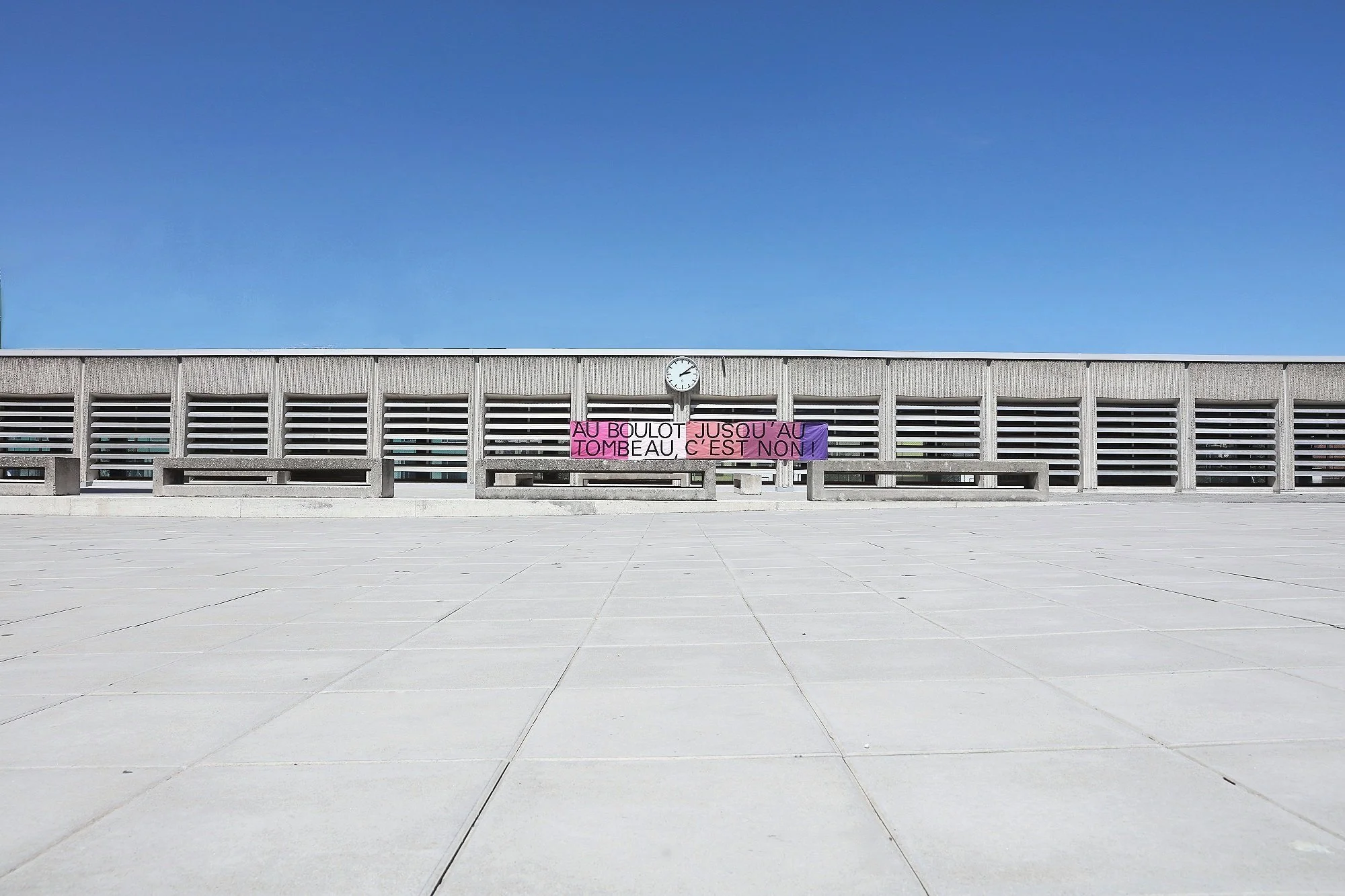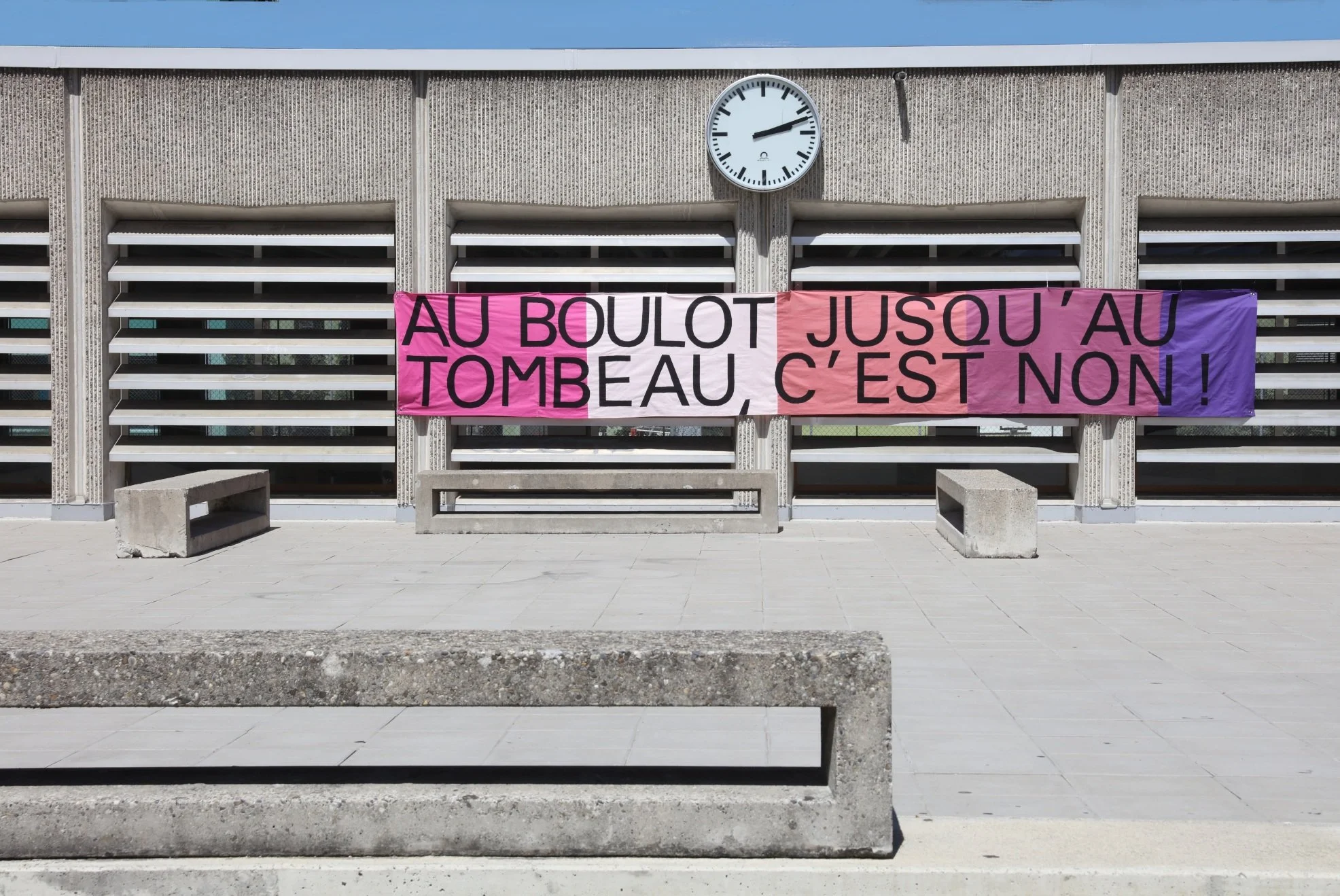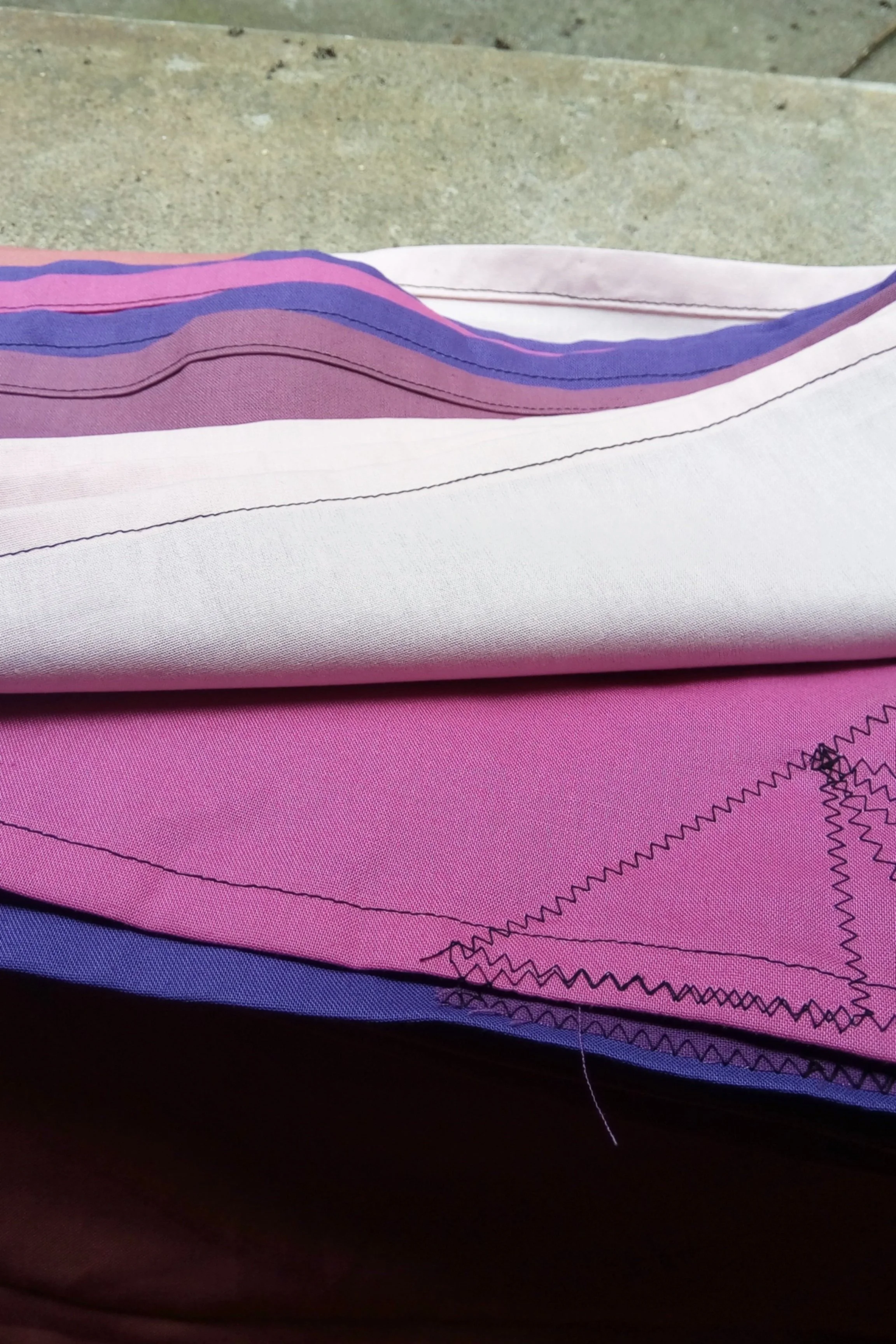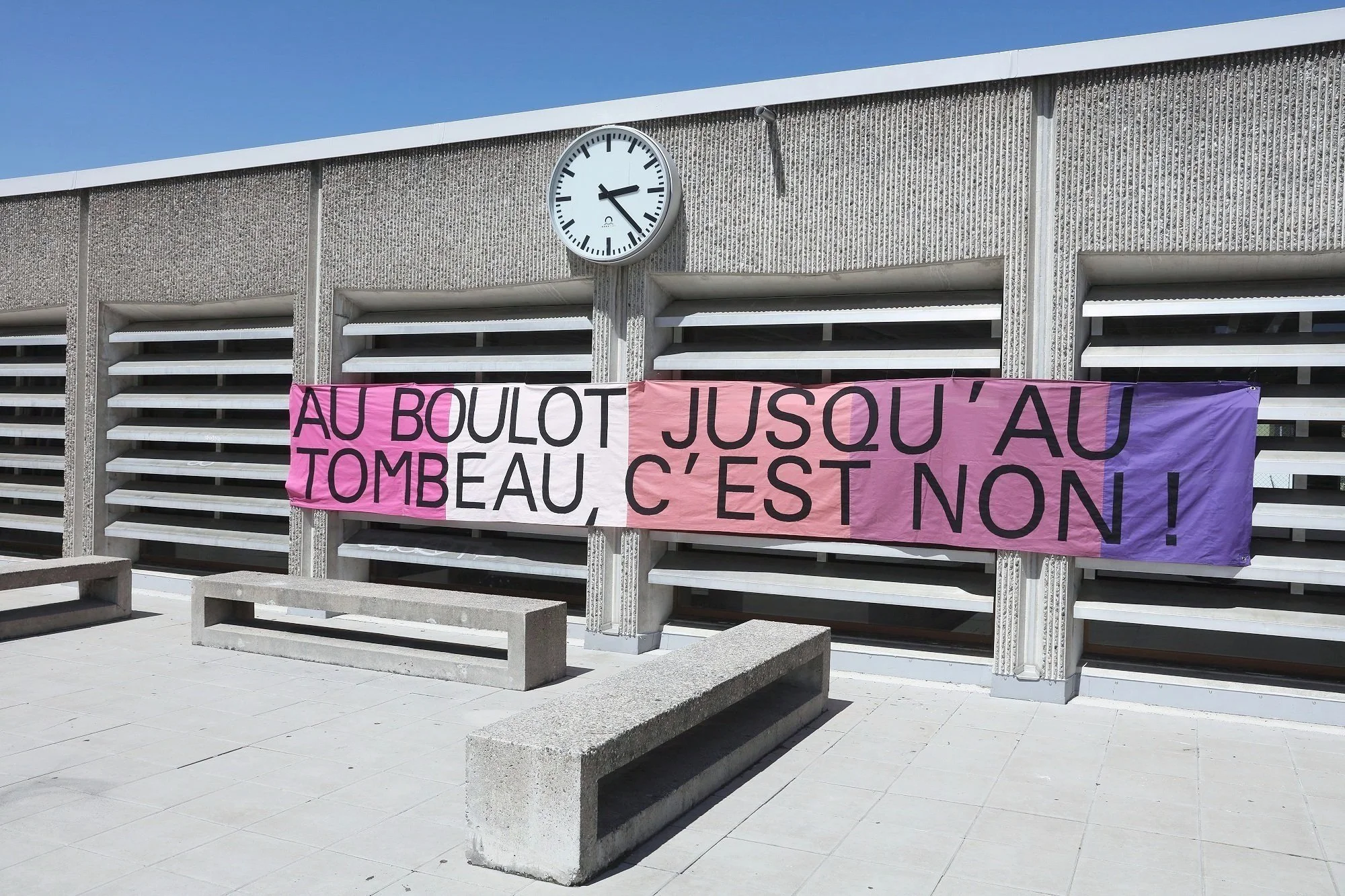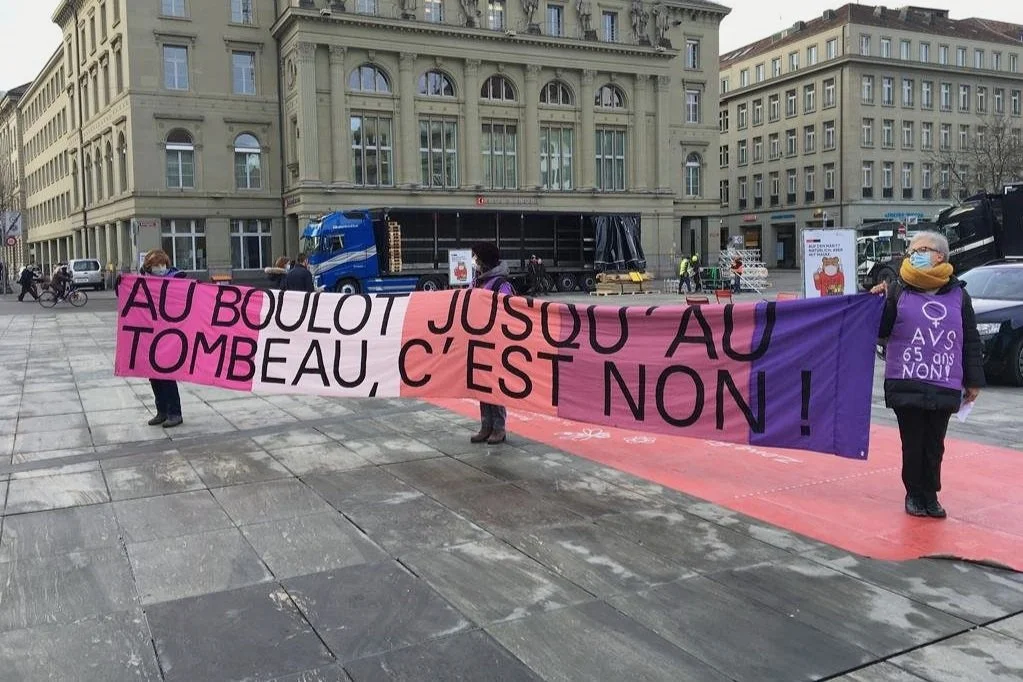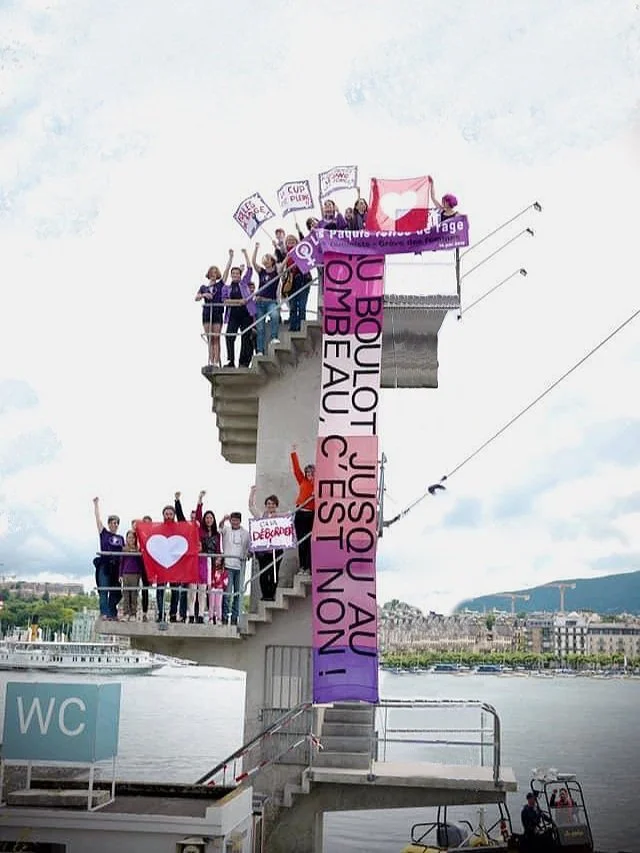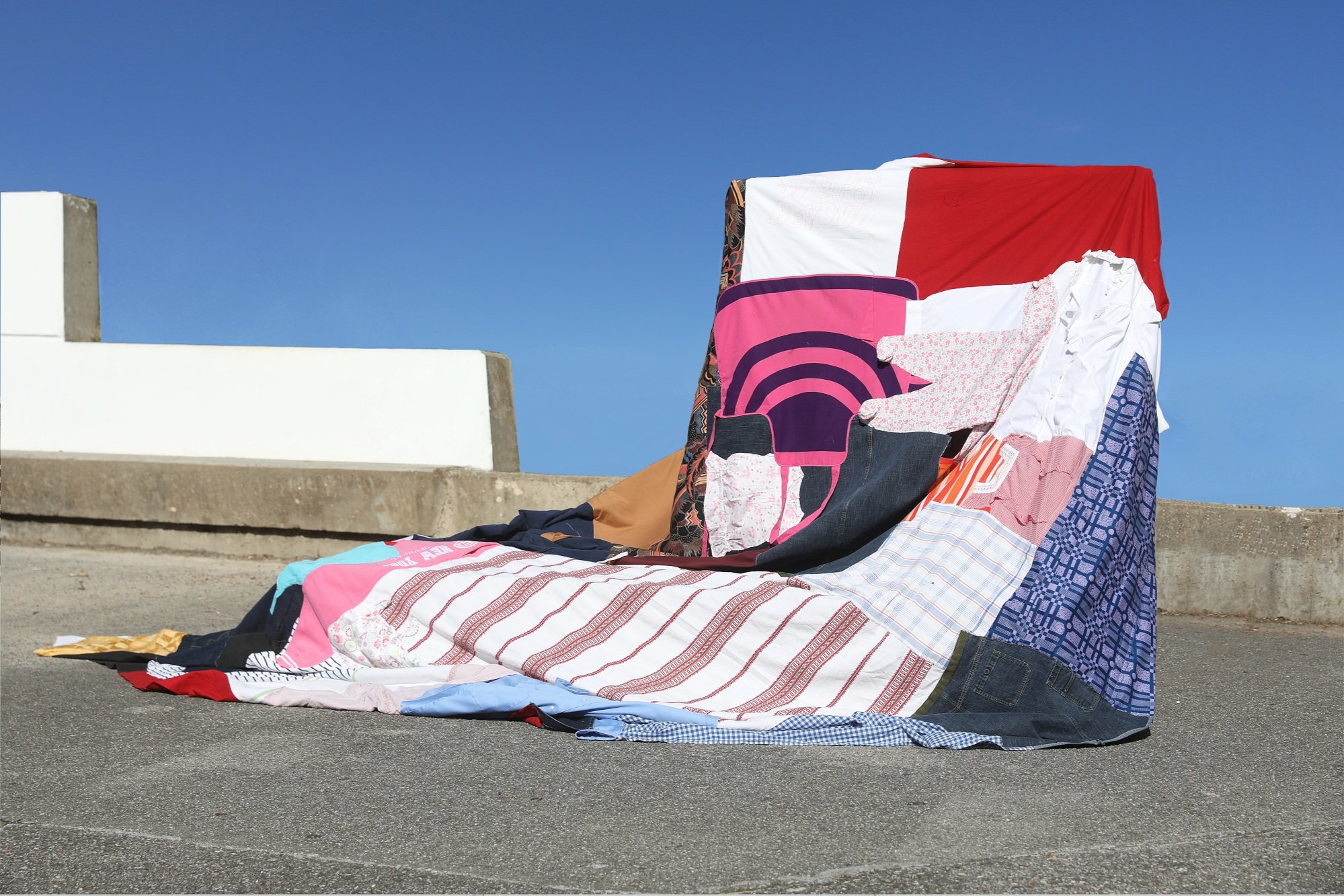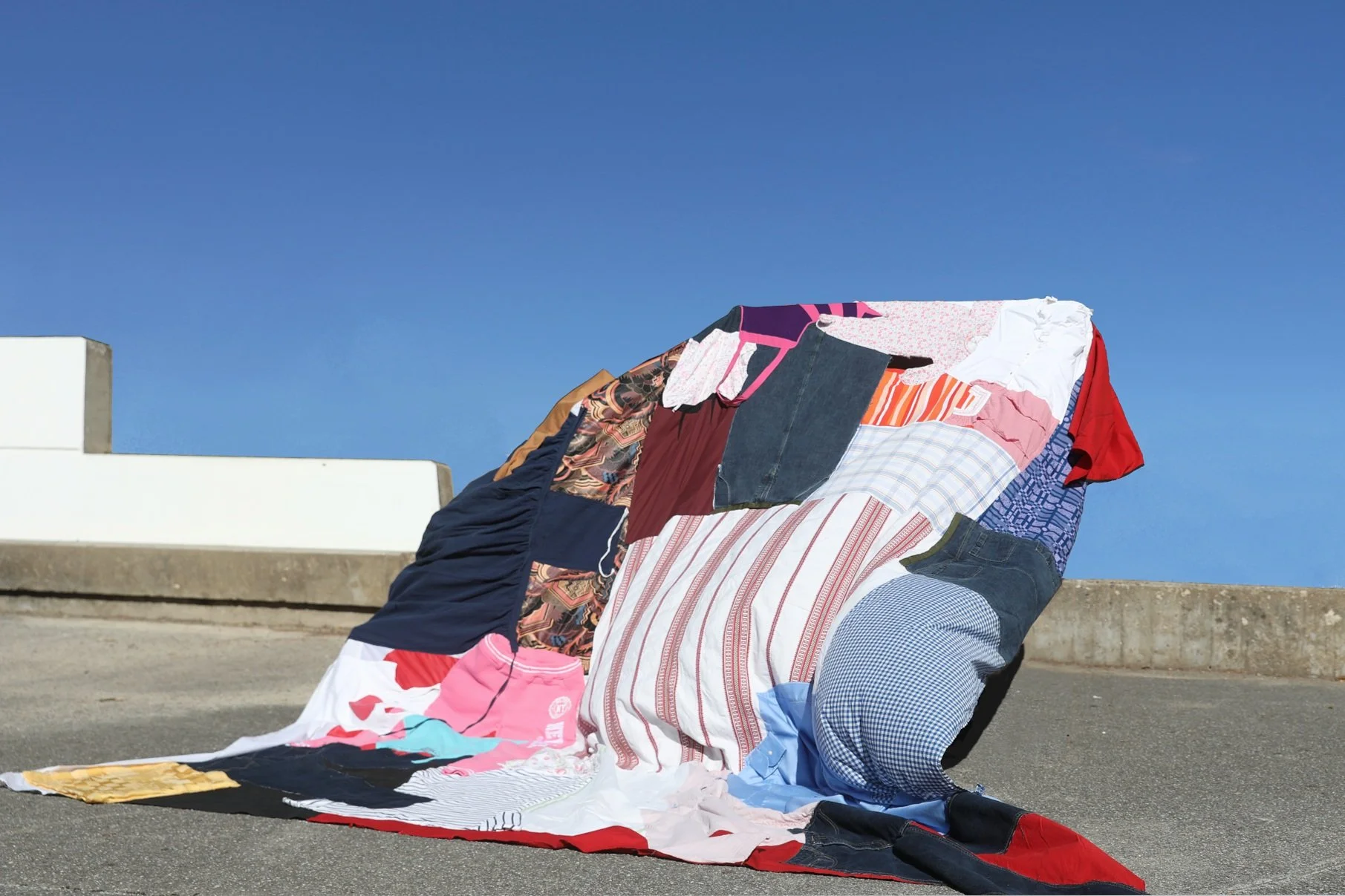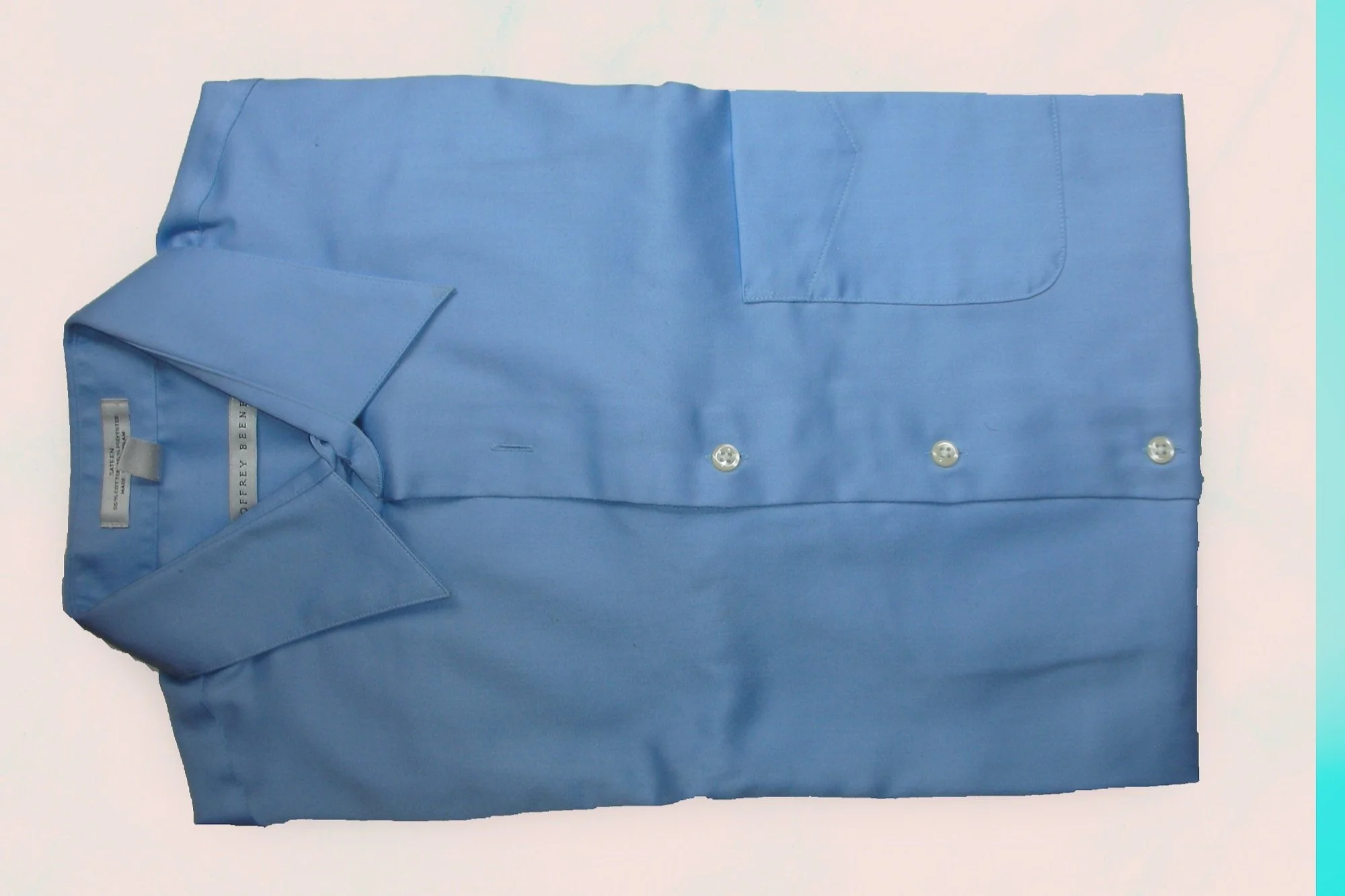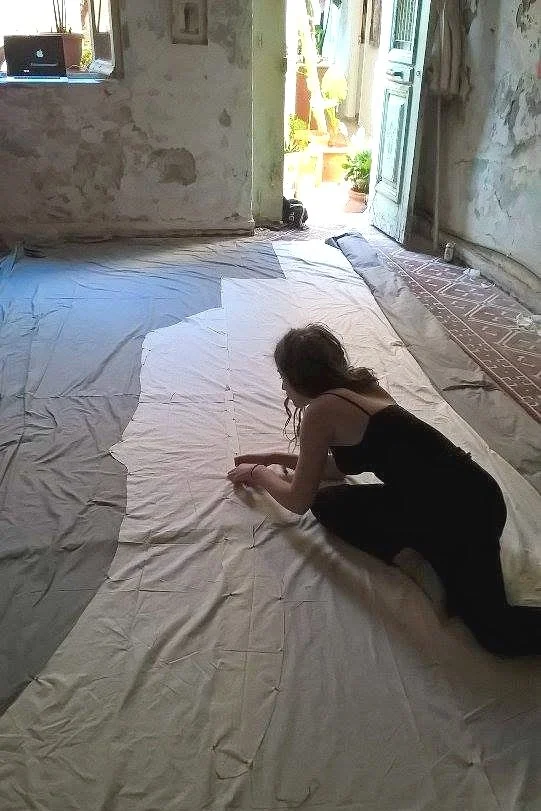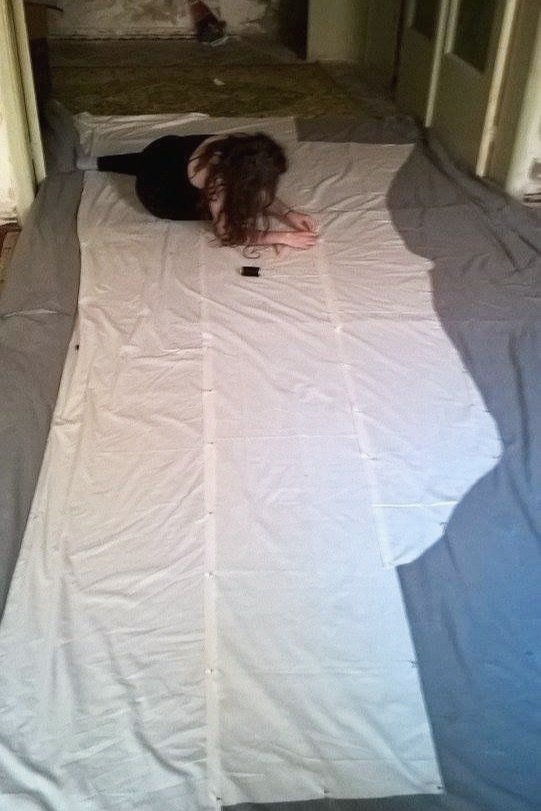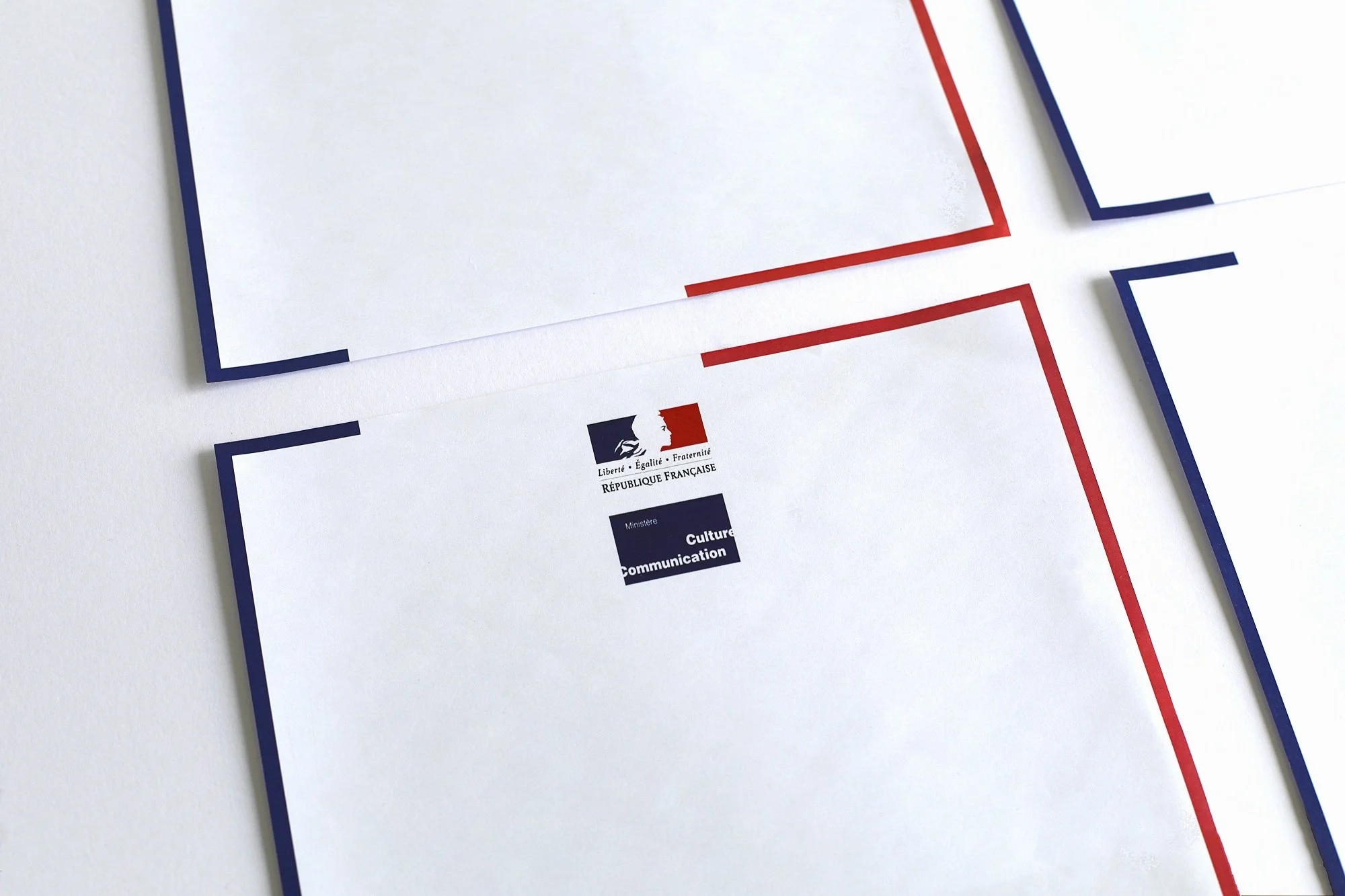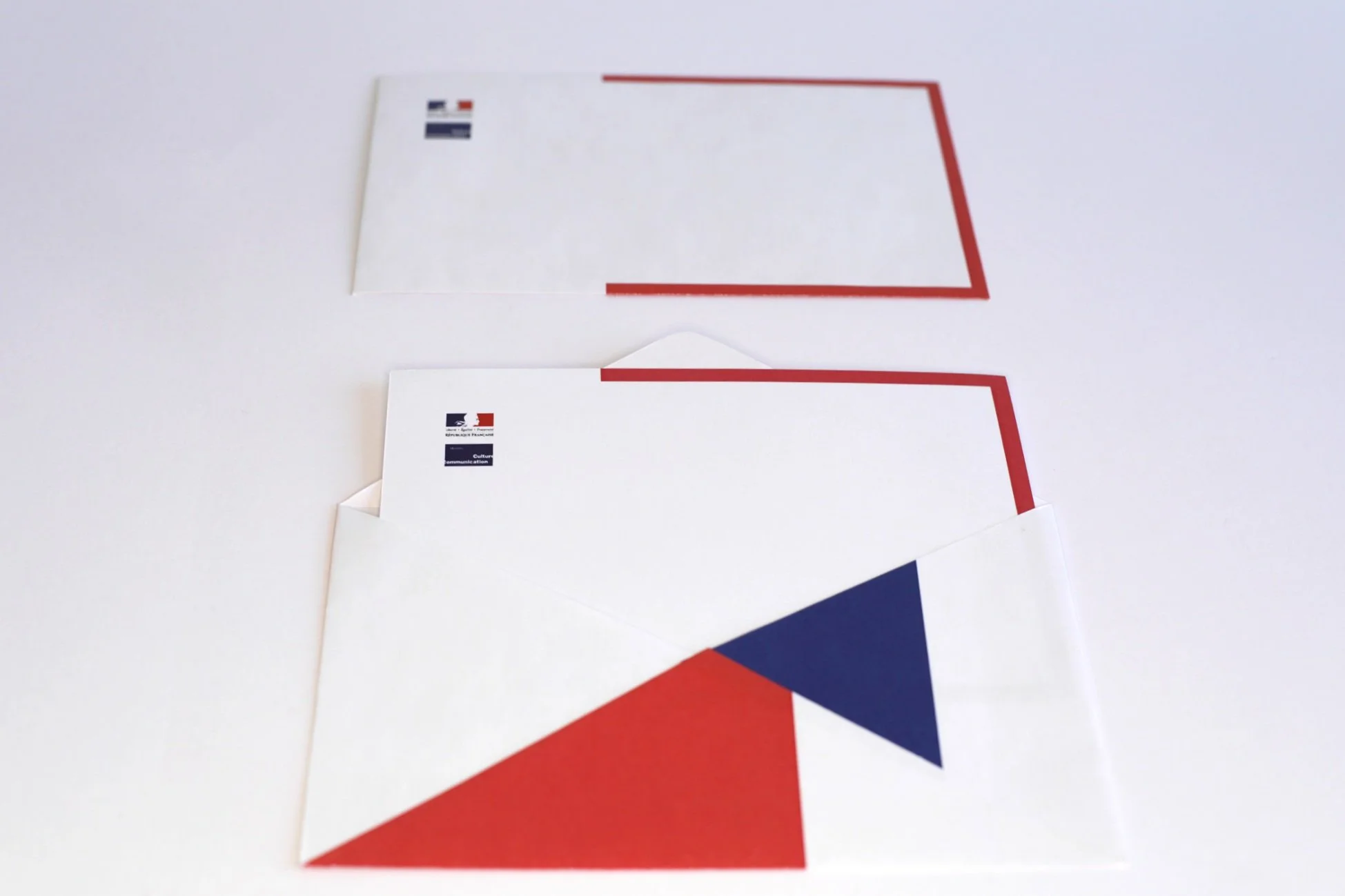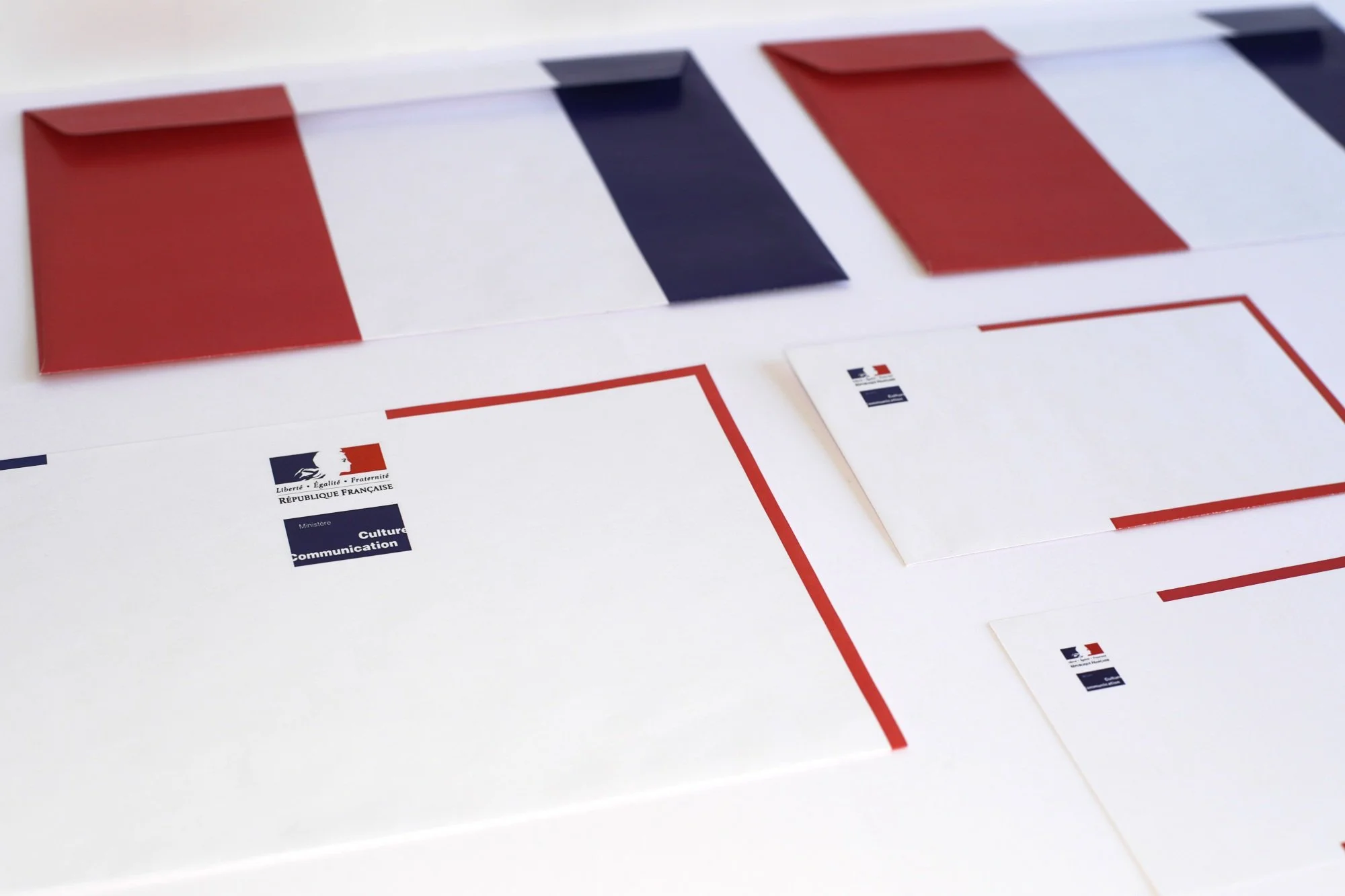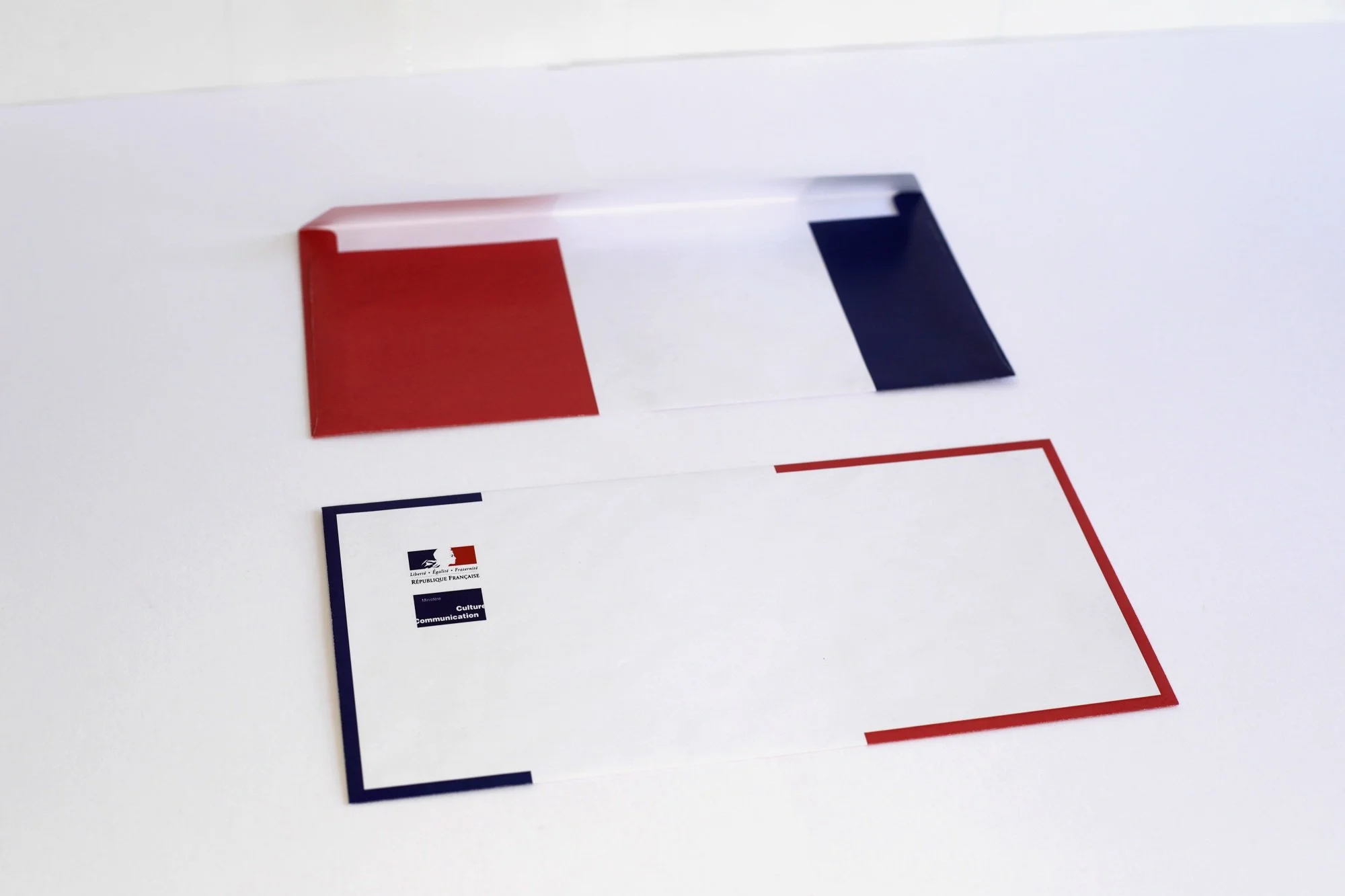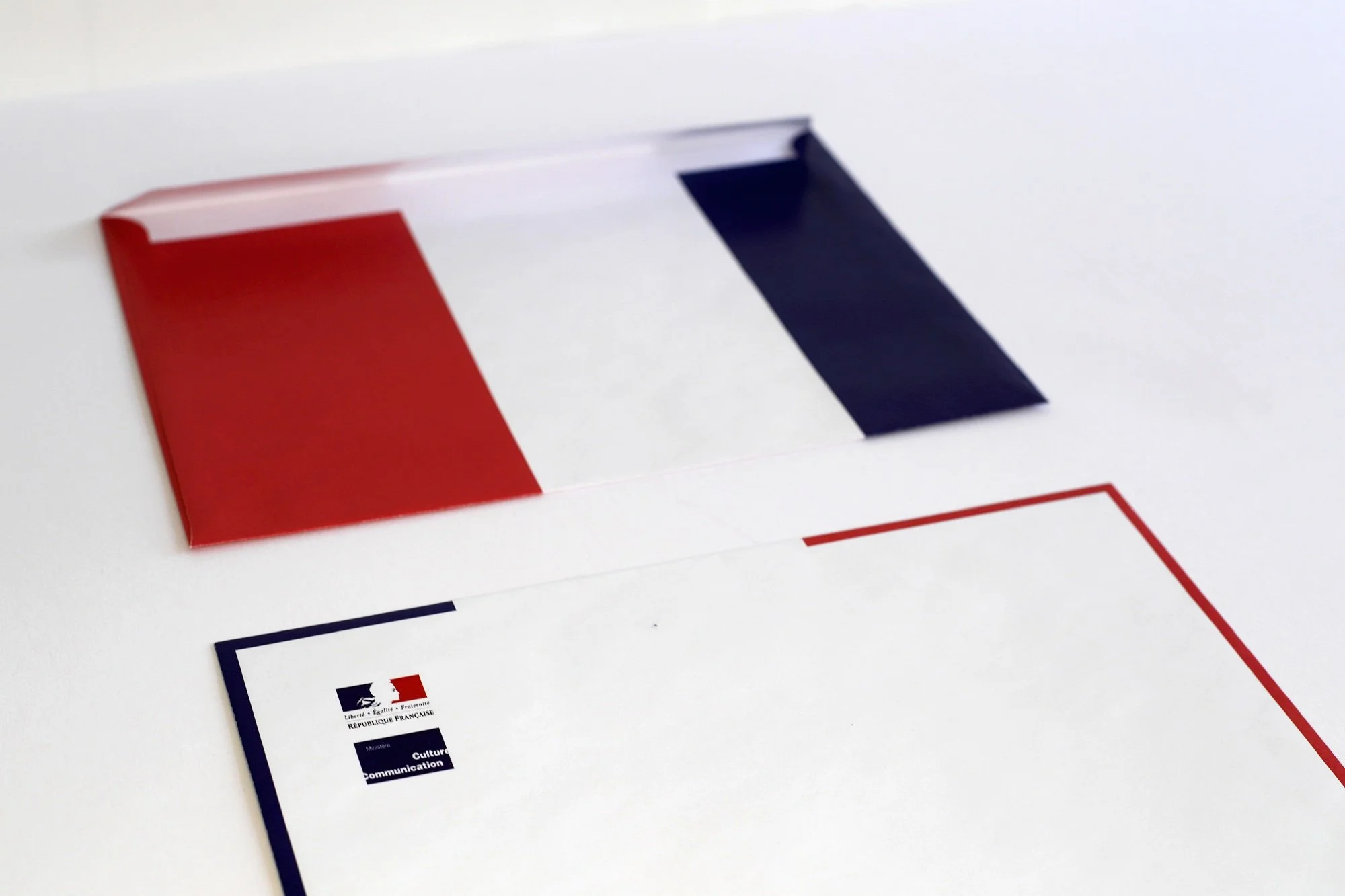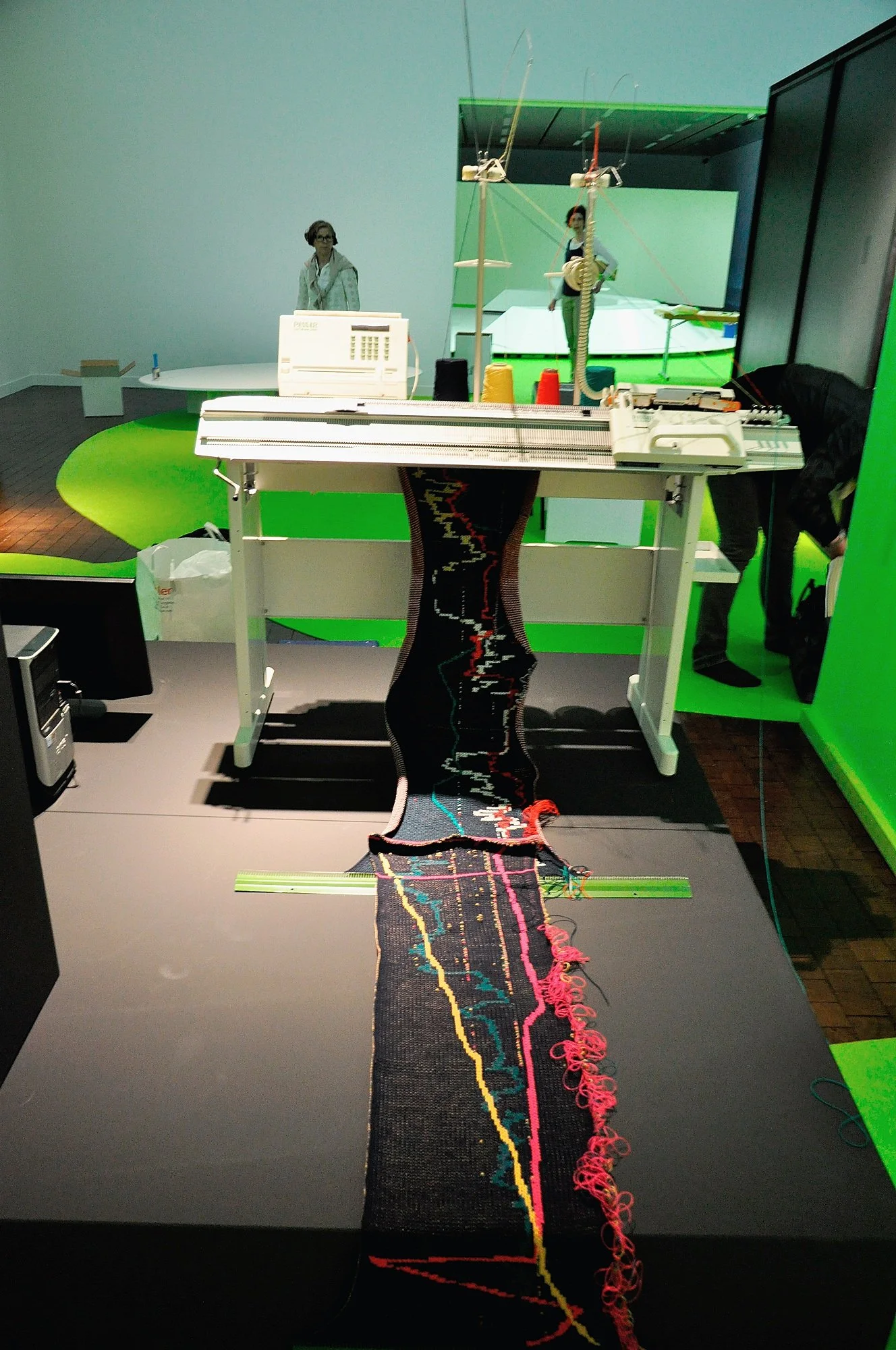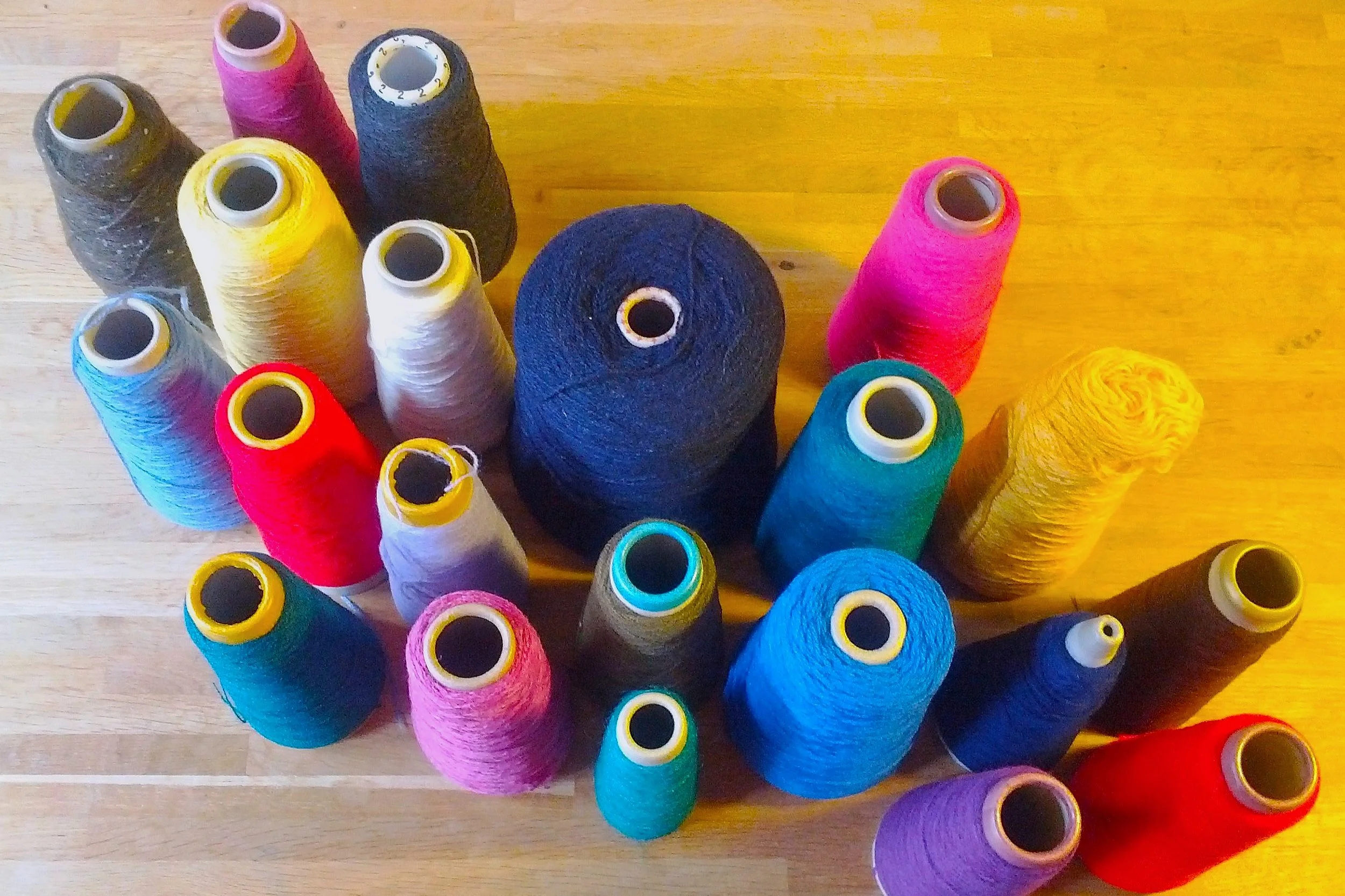Plus intéressée par le moment où une œuvre est montrée que par son processus de création, je place beaucoup d’importance dans les dispositifs et les espaces d’exposition. Mon travail s’articule autour des relations entre les œuvres d’art, leur réception publique, et les espaces dans lesquels elles sont montrées. Dans cette perspective, la fonction et l’apparence des dispositifs d’exposition, la frontière entre ces derniers et les œuvres, la facture artisanale ou industrielle d’objets, la dimension esthétique et la monumentalité d’une œuvre, sa valeur symbolique ou réelle forment l’arrière-fond de ce que je créé. Posant plus de questions qu’apportant de réponses, j’essaie d’envisager mon travail comme des amorces de discussions.
More interested in the moment when a work is shown than in its creative process, I place a great deal of importance on exhibition devices and spaces. My work revolves around the relationship between artworks, their public reception and the spaces in which they are shown. From this perspective, the function and appearance of exhibition devices, the boundary between them and the artworks, the craftsmanship or industrial manufacture of objects, the aesthetic dimension and monumentality of a work, its symbolic or real value form the background to what I create. Asking questions rather than providing answers, I try to see my work as a starting point for discussion.
Au boulot jusqu’au tombeau, c’est non! 100X800 cm, coton fabrics, 2020
In 2020, one year after the important demonstration of June 14th, 2019, the situation for women in Switzerland had not changed much. After the hope generated by the increase in the number of women elected to the federal parliament a few months after this important demonstration, the specter of a postponement of the retirement age for women announced a less bright future. There was a lot of anger about working an extra year without anything being done to ensure that they get equal pensions with men. As the process of changing a law takes a long time in Switzerland, this led to many demonstrations. In this context, the Feminist Strike movement born from the 2019 demonstrations, political parties, trade unions, various associations and interest groups have mobilized. March 2020, the covid arrived and it was no longer possible to demonstrate, or to organize public events. We had to find alternatives to communicate despite everything, and mobilize as widely as possible. I was asked to produce a visual message against this reform, without any other precision.
With the ban on demonstrations, the possibility of displaying slogans in the public space was compromised. The banners that adorn processions, and that can give an important visibility to a cause, suddenly became useless. The idea with this project was not to deprive ourselves of these visual supports, but to use them differently. As these banners could not be shown through the city with a procession, it was necessary to place these slogans in the most visible places. This is how the making of the Banderole started. I took the presentation of a slogan in large capitals on textile, but instead of painting them as is usually the case, I drew them in black textile which I then sewed. The support was composed of a cameo from purple to pink, in reference to the colors of the feminist groups in Switzerland. The sophisticated realization of this banner object and its exhibition in very busy places had for goal to give a monumental dimension to the message, and to challenge the spectators.
En 2020, un an après l’importante manifestation du 14 juin 2019, la situation n’avait guère évolué en Suisse pour les femmes. Après l’espoir engendré par l’augmentation du nombre d’élues au parlement fédéral quelques mois après cette importante manifestation, le spectre d’un report de l’âge de la retraite pour les femmes annonçait un avenir moins radieux. La colère était importante car il s’agissait de travailler une année de plus sans rien ne soit fait pour qu’elles obtiennent des retraites égales à celles des hommes. Le processus de modification d’une loi prenant beaucoup de temps en Suisse, cela a donné lieu à de nombreuses manifestations. Dans ce contexte, le mouvement de la Grève féministe née des manifestations de 2019, des partis politiques, des syndicats, diverses associations et groupements d’intérêt se sont mobilisés. Mars 2020, le covid est arrivé et il n’était plus possible de manifester, ou d’organiser d’événements publics. Il fallait trouver des alternatives pour communiquer malgré tout, et mobiliser le plus largement possible. On m’a demandé de produire un message visuel contre cette réforme, sans autre précision.
Avec l’interdiction de manifester, la possibilité d’exposer des slogans dans l’espace public se trouvait compromise. Les banderoles qui ornent les cortèges, et qui peuvent donner une importante visibilité à une cause, devenaient soudain inutiles. L’idée avec ce projet était de ne pas se priver de ces supports visuels, mais de les employer différemment. Comme ces banderoles ne pouvaient pas être montrées au travers de la ville grâce à un cortège, il fallait que ces slogans soient disposés dans les endroits les plus visibles. C’est de cette manière que la fabrication de la Banderole a débuté. J’ai repris la présentation d’un slogan en grandes capitales sur du textile, mais au lieu de les peindre comme cela est généralement l’habitude, je les ai dessinées dans du textile noir que j’ai ensuite cousu. Le support était lui composé d’un camaïeu allant du violet au rose, en référence aux couleurs des groupes féministes en Suisse. La réalisation sophistiquée de cet objet de cette banderole et son exposition dans des lieux très passants avaient pour but de donner une dimension monumentale au message, et d’interpeller ainsi les spectateurs.
Emmène-moi. 300X400cm, various materials, 2019
On June 14, 2019 thousands of women in Switzerland took to the streets to demand gender equality. In this discreet country, the society is conservative, withdrawn on values inherited from another time. Women earn less than men and often have to choose between career and family. When they decide to continue working, it is not uncommon for them to lose their jobs when they return from maternity leave without any real legal protection. The concept of femicide does not exist either, as these crimes are qualified as crimes of passion until 2021. The distribution of professional activity is also unequal, with an over-representation of women in low-paid professions, such as personal care and domestic economy. In Geneva, the significant need for domestic staff accentuates this phenomenon. Many women work in this sector, sometimes without legal status, and most often in extremely precarious conditions. While they may have had more reason than others to demonstrate, their status prevented them from abandoning their jobs to take to the streets.
Involved in the organization of this demonstration, I met Rosaria, Elena, Nancy, Beatriz, Irina, Audrey, Fatou, Carmen, Elisabeth, Marianna, Liliana, Gabriela, Grace, Diana, Anastasia and Jenny, all domestic workers. While they wanted to demonstrate, they were prevented from doing so by their employers who refused to let them leave for an afternoon. And for some of them, the lack of a residence permit would have put them at too great a risk. Their precarious status made their demands invisible in the public space, and their voices mute. Faced with this observation, it seemed to me that writing a press release to deplore the situation was not enough. It was necessary that these women exist in spite of everything in the public space. From there was born the project of making a giant patchwork. The principle was simple: each woman gave me with a piece of textile that represented her work and her personal situation. From these materials, I composed a patchwork which was then installed on a roof of a building in order to make it visible to everyone.
Le 14 juin 2019 des milliers de femmes en Suisse descendaient dans la rue pour réclamer l’égalité femmes-hommes. Dans ce pays discret, la société est conservatrice, repliée sur des valeurs héritées d’un autre temps. Les femmes touchent des salaires inférieurs aux hommes et doivent souvent choisir entre carrière et famille. Quand elles décident de continuer à travailler, il n’est pas rare qu’elles perdent leur emploi au retour de leur congé maternité sans que la loi ne les protège réellement. La notion de féminicide n’existe pas non plus, ces délits étant qualifiés de crimes passionnels jusqu’en 2021. La répartition de l’activité professionnelle est également inégalitaire avec une surreprésentation des femmes dans des professions faiblement rémunérées, comme les soins à la personne et l’économie domestique. A Genève, les besoins importants en personnel de maison accentuent le phénomène. Beaucoup de femmes travaillent dans ce secteur, parfois sans statut légal, et le plus souvent dans des conditions extrêmement précaires. Alors qu’elles avaient peut-être plus de raisons que les autres de manifester, leur statut les empêchaient d’abandonner leur poste pour descendre dans la rue.
Impliquée dans l’organisation de cette manifestation, j’ai rencontré Rosaria, Elena, Nancy, Beatriz, Irina, Audrey, Fatou, Carmen, Elisabeth, Marianna, Liliana, Gabriela, Grace, Diana, Anastasia et Jenny, toutes employées de maison. Alors qu’elles voulaient manifester, elles s’en trouvaient empêchées par leurs employeurs qui refusaient qu’elles s’absentent une après-midi. Et pour certaines d’entre elles, l’absence de titre de séjour leur aurait fait prendre un risque bien trop grand. Leur statut précaire invisibilisait ainsi leurs revendications de l’espace public, et rendait leurs voix muettes. Face à ce constat, il m’a semblé que rédiger un communiqué de presse pour déplorer la situation n’était pas suffisant. Il fallait que ces femmes existent malgré tout dans l’espace public. De là est né le projet de réaliser un patchwork géant. Le principe était simple : chacune me confiait une pièce de textile qui représentait pour elle son travail et sa situation personnelle. A partir de ces matériaux, j’ai composé un patchwork qui ensuite été installé sur un toit d’immeuble afin de le rendre visible de tous.
Lakkos export! 500X600 cm, toile de coton, 2016 (in collaboration with Yaël Fides)
Invited by the municipality of Heraklion in Crete, Dienstag Abend, a collective of artists based in Vienna was given the mandate to realize artistic interventions in the city. They were given complete freedom to choose the mediums they wanted to use and the form they wanted their interventions to take. However, the works that were to be presented had to have a link with the context, to be produced on the spot, all within five days. The idea behind this project, and all others conducted by Dienstag Abend, is to use the short preparation time as a working method. In this context, the obligation to play with constraints takes on an important role and sometimes completely transforms the original plan. Here, there is no time for multiple trials, or for the search for hard-to-find materials. It is a question of working with the know-how and material resources available. This state of urgency leads to sometimes unusual solutions, improbable encounters, and new collaborations as was the case for the work I presented Lakkos Export, created with Yaël Fides.
The district of Lakkos where we stayed is a neglected area of Heraklion. A hotbed of prostitution, rebetiko and hashish trade in the first decades of the 20th century, the place did not have a good reputation. Low houses, some abandoned, form a dense mesh. The neighborhood seems to have stopped somewhere in the 1950s. In the house where we lived, the plaster of a ceiling had fallen off and formed interesting patterns. First I copied the patterns in a notebook, then the idea came to reproduce it with pieces of textile, and to hang the whole on a visible building, in front of the harbor. The starting point for this project was the abandonment of the Lakkos district by its inhabitants and the public authorities, and the resulting dilapidation, mirrored by the port area, which has been carefully renovated, maintained and, above all, is very touristy. Using the visual vocabulary of the seaside, such as flags and other large visual elements, the ceiling of the abandoned house in Lakkos ended up on a flag flying in the wind, facing the harbor.
Invité par la municipalité d’Héraklion en Crète, Dienstag Abend, un collectif d’artistes basé à Vienne eu le mandat de réaliser des interventions artistiques dans la ville. Une totale liberté était laissée quant aux médiums employé et à la forme que l’intervention devait prendre. En revanche, les œuvres qui allaient être présentées devaient entretenir un lien avec le contexte, être produites sur place, tout cela en l’espace de cinq jours. L’idée derrière ce projet, et de tous les autres menés par Dienstag Abend, est d’utiliser la courte durée de préparation comme méthode de travail. Dans ce contexte, l’obligation de se jouer des contraintes prend une place importante et transforme parfois totalement le plan de départ. Ici, pas temps pour de multiples essais, ou pour la recherche de matériaux difficile à trouver. Il s’agit de travailler avec les savoir-faire et les ressources matérielles à disposition. Cet état d’urgence amène à des solutions parfois insolites, des rencontres improbables, et de nouvelles collaborations comme ce fut le cas pour l’œuvre que j’ai présentée Lakkos Export, réalisée avec Yaël Fides.
Le quartier de Lakkos où nous étions logés est une zone délaissée d’Héraklion. Haut lieu de la prostitution, du rebetiko et du commerce de hashish dans les premières décennies du 20ème siècle, l’endroit n’avait pas bonne réputation. Des maisons basses, abandonnées pour certaines, forment un maillage dense. Le quartier semble s’être arrêté quelque part dans les années 1950. Dans la maison où nous habitions, le plâtre d’un plafond était tombé et formait des dessins intéressants. Recopiant d’abord les motifs dans un carnet de notes, l’idée est venue ensuite de le reproduire avec des pièces de textile, et d’accrocher l’ensemble sur un bâtiment visible, devant le port. Le point de départ de cette réalisation était l’abandon du quartier de Lakkos par ses habitants et les pouvoirs publics, et le délabrement qui en résultait, avec en miroir la zone du port soigneusement refaite, entretenue, et surtout très touristique. Reprenant le vocabulaire visuel des bords de mer, comme les drapeaux et autres éléments visuels de grande taille, le plafond de la maison abandonnée de Lakkos s’est retrouvé sur un drapeau flottant au vent, face au port.
Commande, various dimensions, paper, 2014
In a casual discussion when I was studying art in Vienna, everyone had to say who their favorite artist was. It was not the personality of the artist that interested us, but his or her artistic production. With some hesitation, several people told us about their fascination for the works of this or that artist. What emerged from the conversation, and which was also very amusing, was that everyone's attraction was based on formal aspects such as color, texture, or the materials used, but not a word about the artist's intentionality or the reflective dimension of the works. There was something sensory and childlike in all these accounts, and this was in stark contrast to the critical analysis, discursive discourse, and deconstruction of major artistic concepts that formed our daily lives as art students. Personally, I was not left out: I mentioned Daniel Buren, not because he is my favorite artist, but because the discovery of his work Les Deux Plateaux had marked the ten-year-old that I was.
I remember very precisely that visit to the Palais Royal where my grandmother had promised me to see something "extraordinary". Past the passages where antique shops and tea rooms lined up, the courtyard appeared with its columns and grid patterns punctuating the space. From a child's point of view, the whole thing looked "extraordinary": the black and white bands, the modern and the old, the different heights of the columns. I was so impressed that for a long time I visited all the exhibitions dedicated to Buren, and there were many of them. It's almost as if every medium-sized city in France has acquired one of his works. A true state artist. After a while, the fascination gave way to a circumspect, even mocking look. So, when it came to responding to the challenge of imitating his favorite artist, I produced some stationery supposedly designed by Buren for the French Ministry of Culture. The set includes envelopes of various sizes, stationery and thank you cards, all marked with 8.7 cm stripes in the colors blue, white, red. This trickery seemed appropriate to the omnipotence of his presence on the French art scene.
Au cours d’une discussion banale quand j’étudiais aux Beaux-Arts à Vienne, chacun devait dire qui était son artiste préféré(e). Ce n’était pas la personnalité de l’artiste qui nous intéressait, mais sa production artistique. Avec parfois un peu d’hésitation, plusieurs personnes ont raconté la fascination qu’elles entretenaient pour les œuvres de tel(le) ou tel(le) artiste. Ce qui est ressorti de la conversation, et qui était très amusant aussi, c’est que l’attraction de chacun reposait sur des aspects formels comme la couleur, la texture, ou les matériaux employés, mais pas un mot sur l’intentionnalité de l’artiste ou sur la dimension réflexive des œuvres. Il y avait quelque chose de sensoriel et d’enfantin dans tous ces récits, et qui tranchait singulièrement avec les analyses critiques, les discours discursifs et la déconstruction de grands concepts artistiques qui formaient notre quotidien d’étudiants aux Beaux-Arts. Personnellement je n’étais en reste : j’ai cité Daniel Buren, non pas que ce soit mon artiste préféré, mais parce que la découverte de son œuvre Les Deux Plateaux avait marqué la gamine de dix que j’étais.
Je me rappelle très précisément de cette visite du Palais Royal où ma grand-mère m’avait promis de voir quelque chose « d’extraordinaire ». Passé les passages où s’alignaient antiquaires et salons de thé, la cour est apparue avec ces colonnes et ces damiers ponctuant l’espace. A hauteur d’enfant, l’ensemble paraissait en effet « extraordinaire » : les bandes noires et blanches, le moderne, l’ancien, les hauteurs différentes des colonnes. Cela m’avait tellement impressionné que pendant longtemps j’avais visité toutes les expositions dédiées à Buren, et elles ne manquaient pas. A croire que chaque ville de relative importance en France a acquis une de ses œuvres. Un véritable artiste d’état. A force, la fascination a laissé place à un regard circonspect, voir moqueur. Alors, quand il s’est agi de répondre au défi lancé lors de cette conversation d’imiter son artiste préféré, j’ai produit du papier à lettres soi-disant dessiné par Buren pour le Ministère de la Culture français. L’ensemble comporte des enveloppes de différentes tailles, du papier à lettres et des cartes de remerciements, le tout marqué de bandes de 8,7 cm aux couleurs bleu, blanc, rouge. Cette duperie semblait appropriée à l’omnipotence de sa présence sur la scène artistique française.
Plaid on plaid/ALTEX , various dimensions, various materials, 2012 (in collaboration with Robin Bhattacharya)
In 2011, Greece was facing new economic difficulties and the prospect of a state bankruptcy became real. Living in Athens at the time, I was working for the archives of the National Bank of Greece, where I was researching the founding of this institution. While my political views led me to believe that Greece's neo-liberal economic policy would lead the country to ruin, elements gathered during my research confirmed this. The threat of a financial crash, which provoked huge demonstrations and the occupation of Syntagma Square for weeks, was also the fertile ground for a reflection on alternative economic models. Freeing themselves from a solely economic reading of the crisis, these circles of reflection have integrated very diverse profiles (historians, artists, economists, psychologists, architects, etc...). It is in this movement that I created the installation Plaid on Plaid/ALTEX in collaboration with Robin Bhattacharya.
A work with a double name, ALTEX (Alternative Currency Exchange) or Plaid on Plaid, is a reference to an expression used to describe two opposing patterns. Originating in Scotland, "plaid on plaid" refers to the fact that a man wears patterns from two different clans on his kilt - which is not supposed to happen. From this perspective, the Alternative Currency Exchange, or ALTEX (analogous to FOREX) is intended to be an exchange platform for alternative or complementary currencies, of which there is an almost infinite amount in circulation. Whether they are local currencies, like Brixton Pound, digital currencies, like BitCoin, or artist-created currencies, like the ROBIN™ currency, all aspire to a new economic model. But how could they create a new economy when they borrow the iconography, form, and economic structure of dominant monetary systems? Highlighting these antagonisms, the installation ALTEX/Plaid on Plaid presents an ALTEX rate machine in an electronically knitted pattern. While its surface displays a graph, the reverse side of the knit pattern displays the entanglement of different currencies. This installation was first presented in 2012, at the Vögele Kultur Zentrum in Pfäffikon.
En 2011, la Grèce était en proie à de nouvelles difficultés économiques et la perspective d’une banqueroute de l’état devint réelle. Habitant à Athènes à cette époque, je travaillais pour les archives de la banque nationale de Grèce, où j’effectuais des recherches sur la fondation de cet établissement. Alors que mes opinions politiques m’amenaient à penser que la politique économique néo-libérale de la Grèce allait mener le pays à la ruine, les éléments récoltés durant mes recherches venaient le confirmer. La menace d’un crash financier qui provoqué d’énormes manifestations et l’occupation pendant des semaines de la place Syntagma, a également été le terreau fertile d’une réflexion sur des modèles économiques alternatifs. S’affranchissant d’une lecture uniquement économique de la crise, ces cercles de réflexion ont intégré des profils très divers (historiens, artistes, économistes, psychologues, architectes, etc…). C’est dans cette mouvance que j’ai créé l’installation Plaid on Plaid/ALTEX en collaboration avec Robin Bhattacharya.
Œuvre au double nom, ALTEX (Alternative Currency Exchange) ou Plaid on Plaid, est une référence à une expression utilisée pour décrire deux motifs contraires l'un à l'autre. Originaire d’Ecosse, « plaid on plaid » se rapporte au du fait qu'un homme porte des motifs de deux clans différents sur son kilt - ce qui n'est pas censé se faire. Dans cette perspective, l'Alternative Currency Exchange, ou ALTEX (analogue au FOREX) se veut comme une plateforme d’échange pour des monnaies alternatives ou complémentaires, dont il existe une quantité presque infinie en circulation. Qu'il s'agisse de monnaies locales, comme la Brixton Pound, de monnaies numériques, comme le BitCoin, ou de monnaies créées par des artistes, comme la monnaie ROBIN™, toutes aspirent à un nouveau modèle économique. Mais comment pourraient-elles créer une nouvelle économie alors qu'elles empruntent l'iconographie, la forme et la structure économique des systèmes monétaires dominants ? Soulignant ces antagonismes, l’installation ALTEX/Plaid on Plaid présente une machine ces taux ALTEX dans un motif tricoté électroniquement. Alors que sa surface affiche un graphique, son verso du tricot reprend l'enchevêtrement des différentes monnaies. Cette installation a été présentée pour la première fois en 2012, au Vögele Kultur Zentrum de Pfäffikon.


